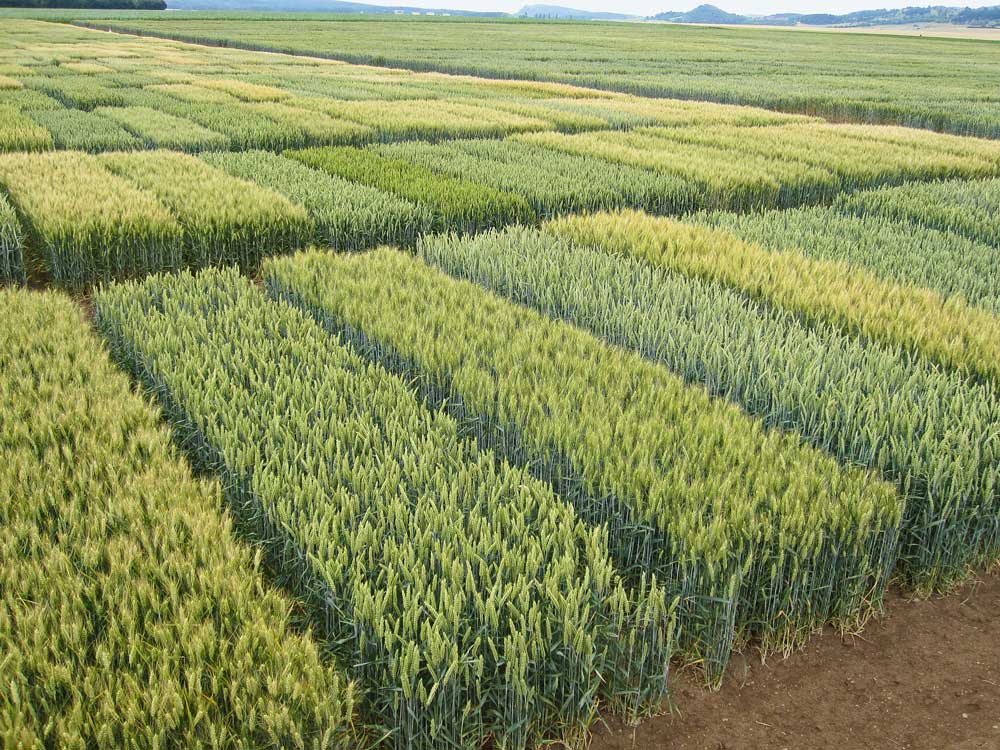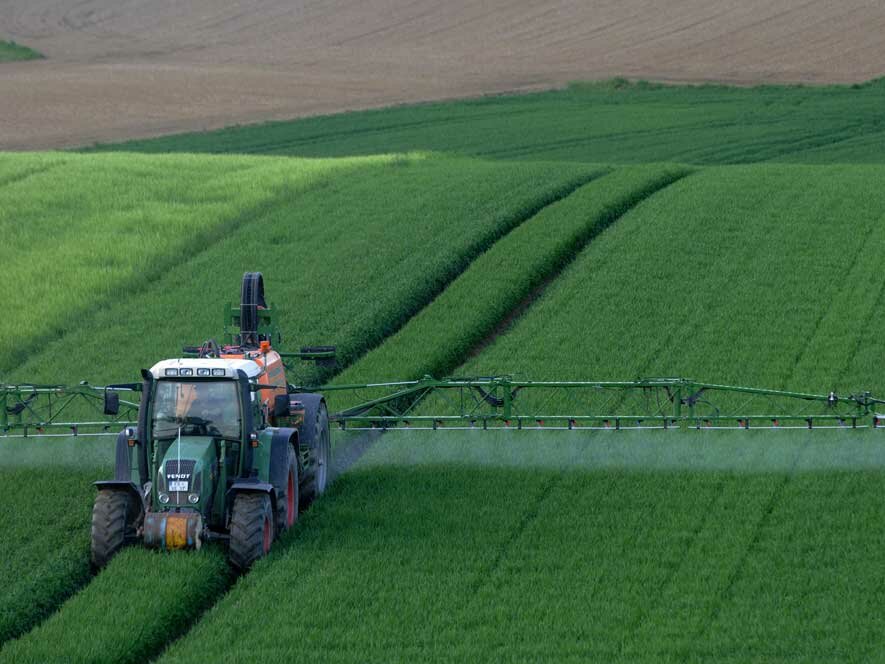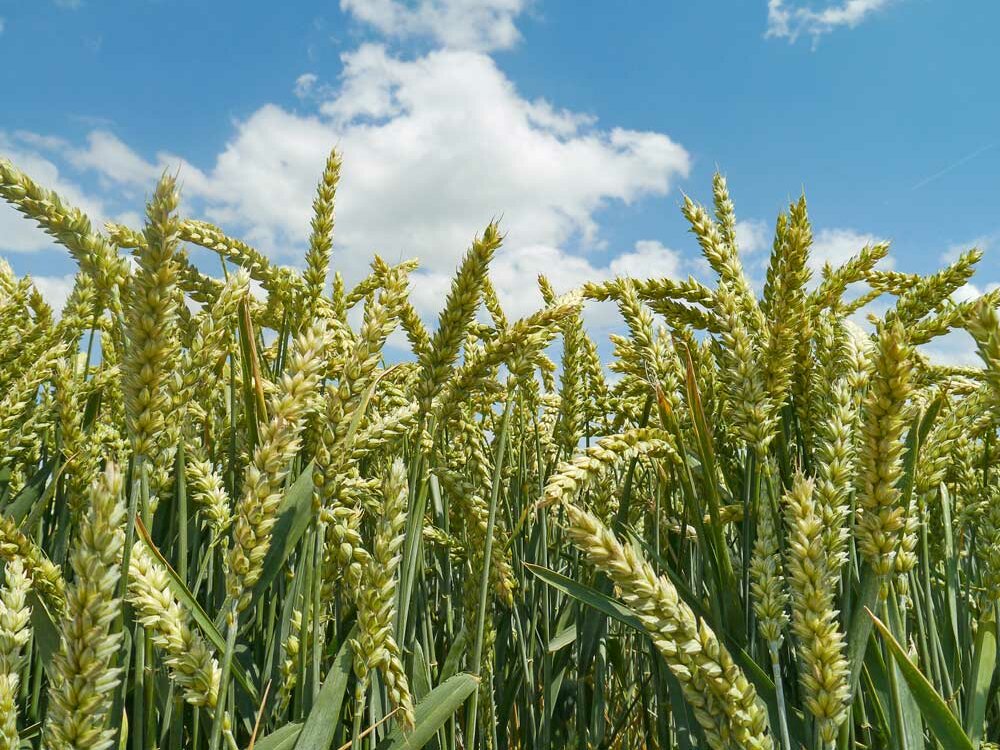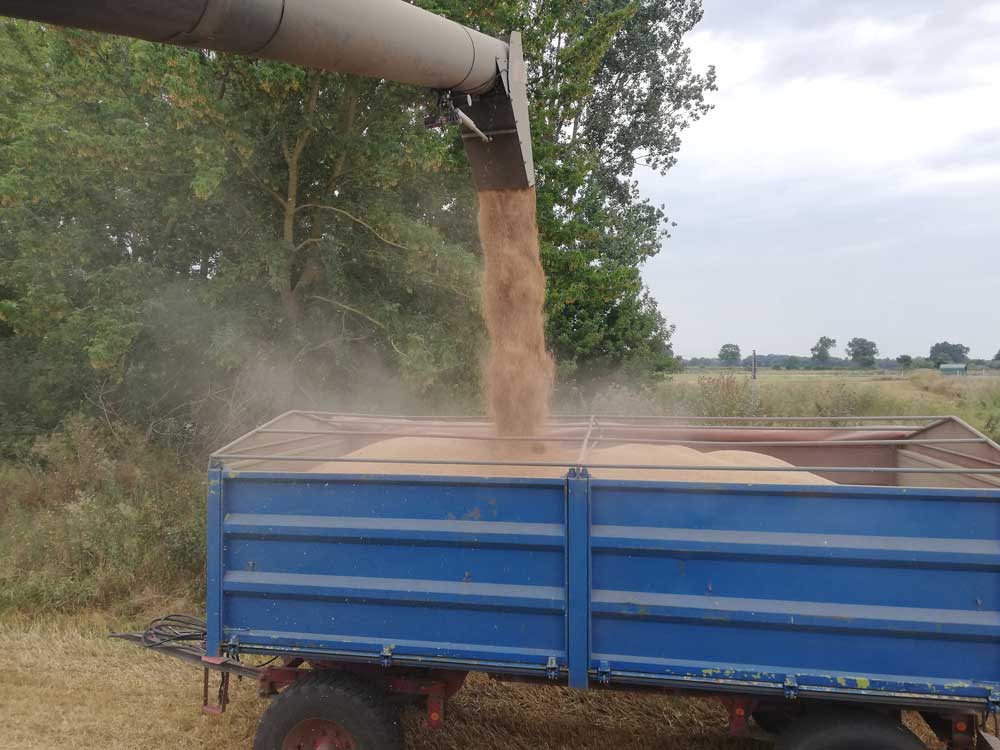Wheat: Have yield limits been reached?
By Sven Böse, former manager of specialist advisory services, Saaten-Union
Further increases in yield are threatened in several ways: by climate change, for instance, and by the reassessment of social values with associated new production methods – trends towards more ecology in agriculture. After two years of record temperatures and negative water balances over large areas, there’s been a reduction in yield expectations. The new Fertiliser Ordinance reduces nutrient supply for plants. In crop protection, the use of important active ingredients is threatened by bans or diminishing efficacy. New developments are rare. Have we thus arrived at the limits of yield development?
Intensifying ecology doesn’t mean extensification
While production intensity decreases with crop input reduction, this (still) does not indicate drastic extensification. Nor would the latter be justifiable on the fertile arable lands of central Europe. For human food supply, but for nature conservancy too, such a trend is unacceptable. After all, there are already large areas of natural countryside. This is only possible with intensive cultivation of the remaining cropland and therefore high productivity (on these cropland areas). High yields enable more efficient exploitation of water and nutrition as well as increased CO2 fixation via humus-creating harvest residues.
Panic: a poor adviser when it comes to climate change
In the past too, we’ve experienced series of poor yields, up until now always followed by new record harvests. However, the last top harvest already lies six years back, in 2014 which was the warmest year since recording started. Despite a dry spring the harvests surprised with record results. In all probability, climate change is making itself most noticeable through fluctuations in yields, not higher average results. And increasing weather extremes also sometimes provide positive yield effects through:
- more radiation,
- prolonged periods of young plant growth or
- the CO2 fertiliser effect.
Growth: Don’t take your eye off the target
Agriculture is in the process of questioning prior crop husbandry techniques and considering new ones. But whether conventional, integrated or organic, professional crop husbandry strategies should never lose sight of the real, and with that central, production target: the organic fixing of as much solar energy as possible and making it usable for mankind. And this must be done in ways that are ecologically, socially and economically acceptable. Such is the definition of sustainability.
Growth motor in crop production
The enormous yield increases experienced from the end of the 1960s, averaging 2% annually, were initially mainly driven onwards by mechanisation, fertiliser application and plant protection advances. From the 1980s, breeding advances gathered pace and, at the latest from the beginning of the new millennium, had major influence on yield increases or at least stabilisation of yields. Nowadays, the great expectations rest on the influences of digitalisation as key technology of »Agriculture 4.0«. Let’s look at these developments individually.
1. Farm mechanisation
Encouraging higher yields from the 1950s onwards was the whole breadth of mechanisation with higher-performance tractors. Deeper cultivation was enabled and therefore improved crumbing. More even individual wheel loads, tyres offering better soil structure protection and, finally, semi-mounted implements: all effectively helped resist soil damage. As from the 1970s, straw was no longer burned in the field but instead, as with other harvest residues, incorporated in the crumb, so allowing specialist arable farms to maintain humus levels without adding farmyard manure. A direct influence on yields was the increasing precision in application of seed, fertiliser and crop protection substances. To this came increasing machinery capacities, helping reduce yield penalties through more punctual drilling, crop care and harvest operations. Still in full flow are the advances of precision agriculture: optimal drilling rates and accurate seed placement mean more efficient use of inputs towards yield development.
2. Plant nutrition
Following official approval of stronger strawed varieties and the use of straw shortener chlormequatchloride (CCC), N fertiliser applications in the 20 years from the 1960s almost doubled. Soil and plant analysis enabled precise applications of macro and micronutrients, split N applications brought increasingly sophisticated crop husbandry. From the 1990s such developments were increasingly reaching efficiency limits and the supply of required nutrients stabilised at a high standard. At present, through the latest amendment to the Fertilisers Ordinance, N applications have been reduced by at least 10%, much bigger restrictions threaten in the (environmentally endangered) »red areas«. Here, the answer is to alleviate the effects of such restrictions as much as possible through technical and crop husbandry measures such as reducing N leaching losses, growing crops that fix or stabilise soil nitrogen and possibly using biostimulants. In this way, at least in the »green areas«, high wheat yields are possible, even with moderate reductions in fertiliser levels. On the other hand, achieving high protein content in grain is hardly possible where probably the final N application is limited. However, here too, there are adjustment possibilities, for instance by using varieties with higher N utilisation efficiency.
3. Crop protection
The steep rise in yields up to the end of the 1990s was supported in many ways by chemical crop protection: through elimination of pathogens, the physiological yield effects of systemic fungicide (»greening«) as well as offering some protection where intensification is as risky as it can be lucrative. Because, only in association with high fungicide, insecticide and herbicide applications are early drilling, close rotations and high N application possible – just as with the growing of higher yielding varieties that are more disease-susceptible. Now we are seeing many of the active ingredients losing official approval through changed evaluation of dangers, their environment effects or substitution possibilities. Following the ban of dimethoate and neonicotinoids, insecticide applications now concentrate still more on pyrethroids. There, further losses in efficacy are to be feared. The same applies to herbicides, a field where no new effective mechanisms have been applied for over 30 years. Because they are very specific in their actions, strobilurine and carboxamide fungicides risk losing efficacy and thus are only applicable to a limited extent. With the triazoles, still the backbone of every fungicide strategy, the older active ingredients are now going out of use. Still available for use is prothioconazole, as well as the new isopropanol. Nowadays, hopes for the future are pinned on the so-called biologicals where efficacy is based on, e.g. enzymes, nucleic acids or viruses. These biological crop protection materials, however, must still prove their impact potential in broad practical application.
4. Plant breeding
The yield improvements calculated through comparing 191 winter wheat varieties officially registered in the years 1966 to 2013, during two years of trials on six locations gave the following increases:
- 35 kg/ha with extensive fertiliser application (110 kg N/ha incl. Nmin) with no fungicide,
- 44kg/ha with optimal N application (220 kg N/ha incl. Nmin) with no fungicide,
- 32kg/ha with optimal N application and fungicide application.
Most striking result is the higher yield increase with optimal dunging but without fertiliser application. Apparent here lies the advantage of improved plant health in newer varieties. But such yield increases do not appear in practical farming. Why not? The answer is that on commercial farms there are two influences: the »genetic yield trend« and the »non-genetic yield trend«. The latter influence includes the effects on yield of husbandry /farm management and weather. This influence appears to have stagnated since around the start of the new millennium with the danger that it might even reduce in the future. Thus, breeding progress also plays a role – in fact probably the main role – in yield stabilisation. What is clear is that the wheat varieties of 1980, if threshed out nowadays, would yield an average 1.3 t/ha below the current average!
5. Digitalisation
Big promises are being made here: individual processes linked together through digitalisation would give »multidimensional technical ecosystems. Knowledge, capabilities and resources are networked; production procedures more flexible and resilient.« Still missing is compatibility between different IT networks and data structures. Also currently lacking is trust in data protection as well as further developments such as in sensor technology. However, when such obstacles are overcome, the breeding advances through cloud-based variety selection and cultivation optimisation could be applied even more efficiently. In such a practice-based variety screening, special varieties could show their strengths, such as improved weed suppression, pH tolerance or nutrient use efficiency. Classical variety testing can be complemented in this way, or party replaced, the variety development genetically broadened. And through this, yields would also profit. Then, with the advantages of site-specific drilling could then be grown on a heterogeneous field no longer only genetically identical full-siblings, but instead a number of varieties with appropriately adjusted genetics, individually and precisely managed, from seed rate through to late dressings of N.
The struggle continues!
Neatly formulated, plant breeding has passed through its »industrialisation« phase and now enters a »biological« phase. Hereby, focus is more on the closed circle economy, resource protection, biological regulation and genetic diversity. This transformation disrupts and also alters with its operational conditions the up-until-now respected “best business practice “. But disaster scenarios need not be the result! Anyway, those mostly turn out to be wrong because they underestimate adjustment possibilities and technical innovations. The further development of yield is not down to fate, but instead can only be the result of positive, as well as negative, efficacy factors, some of which can be influenced! It still cannot be foreseen to what extent climate change and crop growing restrictions might influence yields. In the end, what is decisive is whether, in comparison to these effects, the biological-technical advances - i.e. the productivity factors – will be greater or smaller. And here a glance at developments on the plant breeding plots, workshops and laboratories indicates that optimism is not out of place.
We remain optimistic
Breeding innovations together with digitally optimised crop management processes can contribute to stabilisation of yield at high levels, or even further yield increases! Such developments require substantial efforts and these should be encouraged with some urgency. Seen in this light, the present disruptive mood could well be the basis for a »biologicalisation« of crop husbandry and thereby continued high production, even in the future.
All available results speak for the breeding and yield advances being continued, supported by further increases in resistance against pathogens and abiotic stress. Wheat hybrids offer further yield potential. Even now, they produce the highest yielding strains in performance trials. Their extra performance is plus 8 – 10% compared with best line bred varieties, as confirmed in multiple annual trials within the research project HYWHEAT.






